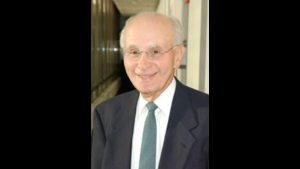Eldridge Synagogue is restored to its Moorish splendor
Published August 17, 2011
NEW YORK – Tucked away in a congested street in the heart of New York City’s Chinatown, squeezed between noisy restaurants, beauty salons and even a Buddhist temple, is an unexpected gem of American Jewish history. The Eldridge Street Synagogue, which first opened its doors in 1887, is the first United States synagogue that was built from the bottom up by Eastern European Jews.
This incredible building with its soaring 50-foot ceilings and Moorish style interior has been returned to its palatial splendor thanks to a 20-year restoration project that ended in 2007. Today, visitors can once again experience the grandeur of the extraordinary sanctuary with its original green glass chandeliers, carved wooden pews and its newest addition installed just last year: a mesmerizing stained glass circular “rose window” embedded with a myriad of stars.
ADVERTISEMENT
“Visitors often ask, ‘What is a synagogue doing in the middle of Chinatown,’?” said Amy Stein Milford, deputy director of the Museum at Eldridge, which is housed in the synagogue’s building at 12 Eldridge Street and was created as part of its restoration that was completed in time for the synagogue’s 120th anniversary.
While it might seem strange to see this grand Synagogue towering above a Chinese neighborhood, it stands as a testament to the bustling Jewish community of spirited immigrants that once flourished in Manhattan’s Lower East Side. In fact, of the 2.5 half million East European Jews that came to the United States between 1880 and 1924, 85 percent lived in New York City. And of those, 75 percent initially resided on the Lower East Side.
The synagogue prospered for some 50 years but memberships began to drop in the 1920s through the 1940s and following World War II, as many people moved to the suburbs. By the 1980s, pigeons roosted in the balconies and benches were covered with dust.
The building was rescued by the non-sectarian Eldridge Street Project. The synagogue was designated a National Historic Landmark and more than $18.5 million was raised to restore the building. The aim of the project was to try to return the synagogue as much as possible to its original state. So it contains many of its original elements including its grand 19th century gas light fixtures.
ADVERTISEMENT
There are many poignant features as well, including an exposed panel of wooden lath and plaster inside the wall in the women’s balcony. This area was purposely left in disrepair to demonstrate the state of decline the synagogue had reached before it was renovated.
Stein Milford said the oldest object in the building is a torah ark that was moved in 1886 from a converted church space where the congregation had originally prayed. Today the ark is located in a small chapel used for daily minyans.
“They paid $3 to have it moved over here,” she said.
But among the most moving features are the patches of bowed wood flooring throughout the sanctuary caused by congregants as they rocked back and forth while davening.
These dramatic pieces of the grand synagogue’s history are tied to the present with the circular blue/green glass window designed by artist Kiki Smith and architect Deborah Gans. A six-point Star of David sits at its center while five-point stars swirl around it. Stein Milford said the aim of the design is to give the feeling of a sacred place and Jewish identity while the five point stars are evocative of the federalist tradition and American flag.
“They wanted to create something heavenly but that also showed that the congregants embraced the American culture,” she said.
In addition to being a museum, Eldridge Street is still a working synagogue and its tiny Kahal Adath Jeshurun Orthodox congregation continues to hold daily minyans. However, it only has about 20 members. In fact, Stein Milford suggested visiting Eldridge Street Synagogue if you need a place to go for the High Holidays.
“You no longer need a ticket,” she said.
The museum, which is located between Canal and Division Streets, is open Sunday through Thursday, 10 a.m.-5 p.m. and Friday from 10 a.m.-3 p.m. Admission, which includes guided tours, is $10 for adults, $8 for students/seniors and $6 for children. Admission is free on Monday. For further information visit http://www.eldridgestreet.org/













